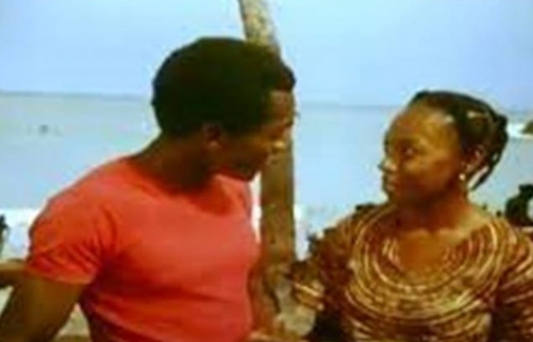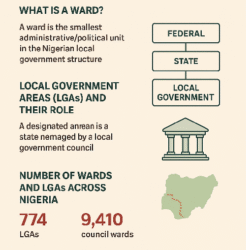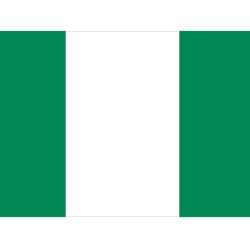Ghana’s cinema, officially known as Black Star Films, began in 1923, when early filmmaking was introduced to the British colony of Gold Coast (now Ghana). At the time, only the wealthy could see the films, particularly the colonial master of the Gold Coast. Ghanaian filmmaking began to flourish in the 1950s. Until the advent of home video, cinemas were the primary venue for film viewing.
Cinema in the Colonial Period
Individuals in the private sector introduced film to Ghana (then the Gold Coast) in the early 1920s by opening cinemas in urban areas. By 1923, cinema had evolved into a new form of entertainment, with only the wealthy able to see the films shown in theaters. Cinemas were reserved for the upper crust of society, namely colonial leaders and their top officials. Cinema vans were later used in rural areas.
The colonial masters realized in 1948 that film, aside from its entertainment value, could be used to transform society, so they established the Gold Coast Film Unit at the colonial government’s Information Services Department. Film became another scientifically acceptable system for influencing society. The Gold Coast Film Unit screened documentary films, newsreels, and government information films to the public on green-yellow Bedford buses. Attendance was completely free. Educational and feature films were produced for their African colonies.
The Gold Coast Film Unit also made films of local interest to promote better health, crops, living conditions, marketing, and human cooperation. The Gold Coast Film Unit began training local African filmmakers in 1948. Other British colonies in Africa exchanged films.
Palladium cinema. Photo credit: cinemaintransit.wordpress.com
Black Star Films: Contemporary Ghana Cinema
Ghana’s new cinema industry, also known as Black Star Films, formerly Gollywood, began in the early 1980s. Prior to Black Star Films, the government of Ghana, which inherited the film industry from the colonial government, was the country’s sole producer of films. Dr. Kwame Nkrumah, the president at the time, established the Ghana Film Industry Corporation (GFIC) in 1964 in Kanda, Accra. TV3, a private Malaysian television station, is now housed at GFIC. Dr. Kwame Nkrumah sent many Ghanaians abroad to learn filmmaking in order to run the GFIC. Ghana had professionally trained filmmakers employed by the government to produce films for the country’s socioeconomic development. Legends like Rev. Chris Essie, Mr. Ernest Abbeyquaye, Mr. Kwaw Ansah, and many others were all trained by the government during that time period. GFIC was founded to use indigenous Ghanaian films to counteract the negative impact of colonial government films and to restore citizens’ pride in being Ghanaians and Africans. The Ghana Film Industry Corporation was producing films to help Africans gain self-sufficiency.

Independent Films
Kwaw Ansah, a legendary Ghanaian filmmaker, produced the first independent film, Love Brewed in the African Pot, in 1981. Celluloid film was used for the production. Following that, King Ampaw, a Ghanaian filmmaker trained in German, followed suit in 1982 with the release of his film Kukurantumi – The Road to Accra. By the mid-1980s, a new generation in Ghana, led by William Akuffo, had decided to use the new video technology introduced to the world in 1978 for film production. Beginning in 1986, feature-length films in Ghana were shot on Video Home System (VHS) cameras. The idea was to tell the Ghanaian and African stories through the eyes of Africans. Ghana was the first country in the world to shoot feature-length films with VHS cameras. Ghana could boast of a number of films produced in Ghana on VHS tapes and cassettes by the end of the 1980s.
Love Brewed in the African Pot is reportedly the first privately financed Ghanaian feature film and is considered a classic
Direct-to-Video Films
Ghana has seen an increase in the production of direct-to-video films since the late 1980s. Despite the difficulties in financing film production, Ghanaians began to make their own films on VHS video cameras. Independent filmmakers developed their own Ghanaian stories and scripts for the films, assembled actors, both professionals, and amateurs, and produced successful films, particularly in Accra. The profits from these VHS video movies aided the film industry. By the early 1990s, Ghana was producing approximately fifty VHS video movies per year. Professional and amateur filmmakers in Ghana produced films of comparable quality and garnered equal respect over time.
Twi dialect films are known as Kumawood films in Ghana. Ghallywood productions are Ghanaian films that are made in English. And all films made in Ghana are referred to as Black Star Films. Despite widespread criticism, films depicting African witchcraft are popular in Ghana.
Some known Ghanaian movie actors and actresses
Ghanaian – Nigerian Collaborations
Around 1997, Ghanaians and Nigerians began making collaboration films, which introduced Nigerian film directors, who later collaborated with Venus Films, a Ghanaian production company, to produce a number of films that brought out Ghanaian popular actors who could work in Nigeria (Nollywood).
Film Institutions in Ghana
The National Film Authority promotes the creation of a conducive environment for the local production, distribution, exhibition and marketing of films in Ghana. Ghana established the National Film and Television Institute (NAFTI) as a public institution of higher education in film and television.
Reference: Film – Ministry of Tourism, Arts & Culture (MoTAC) Ghana
















